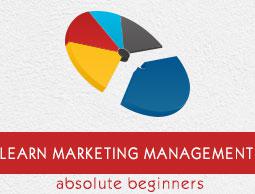Marketing Management - Advanced Topics
E-Marketing
E-Marketing entails advertising a product using digital medium. In the recent years, digital devices have developed rapidly and are now commonly used, creating a new medium for advertising. At the same time, internet services have become affordable for mass consumers.
E-Marketing has many benefits compared to traditional marketing, for example, a large number of potential consumers can be a reached in a shorter span of time. The comparison between e-marketing and traditional marketing is explained in the next section.
E-Marketing Vs. Traditional Marketing
Let us now understand the difference between E-Marketing and Traditional Marketing −
| E-Marketing |
Traditional Marketing |
| It is an economical and faster way of promoting a product. |
It is comparatively expensive and time consuming. |
| Products can be advertised globally because of less time involved. |
Coverage of promotion is limited because of the time involved. |
| The number of employees required is fewer. |
It requires more employees than emarketing, which results in higher costs of marketing. |
| E-marketing provides time flexibility for a customer, so one can make a transaction any time. |
Flexibility is not commercially viable. |
| Costs involved are reasonable. |
Costs involved are not reasonable. |
Green Marketing
Green marketing is marketing of products that are ecofriendly and don’t damage the environment. To make a product ecofriendly, there is a wide range of activities to be performed like product modification, change in production techniques, change in packaging, etc.
Green marketing appeals to environment-concerned consumers and it also reflects the business ethics of an organization.
Services Marketing
Services marketing is marketing of service-related businesses.
It is marketing of some activity or experience provided by the business. While marketing such services, the focus should be on the value of delivery and reputation of the organization.
Components of Services Marketing
Services marketing has grown rapidly over the years. In this segment, the quality of service has great importance for attracting and retaining customers. The following are the components of service marketing −
Knowing the features of the service
Shaping the service accordingly
Targeting the present and potential customers
Target advertising
Price determination
Promotional requirements
Creating an efficient delivery system
Evaluating quality of service
Determining effectiveness of the product mix and using it efficiently
Collecting customers’ reviews for improvement in service
Customer Relationship Management
Customer relationship management is about building relations between customers and enterprises. It gives a huge competitive benefit from other competitors in the market; the customer relationship management increases customer loyalty. It gives the company a tactical advantage in long–term because loyalty of customer can lead to consistent profit and it can be achieved by quality service.
Customer relationship has proved to increase customer loyalty, which can mean huge profits in long-term. This can further be improved through the following process −
Storage and management of data
Organizational structure creation and management
Responding to customer queries and complains in real time
Workforce that can deal with customers with training in the product and organization ethics
Rural Marketing
Rural marketing is a process of marketing products for the outskirts or rural areas. This segment of market is very price sensitive but comprises a very large consumer group.

Importance of Rural Marketing
The consumer group of this segment is very large and has lot of potential in terms of growth. This segment of market has expanded rapidly and has great overall purchasing power and has made an impression in economy.
The following are the important reasons for the emergence of rural marketing −
Rural market offers new opportunities for the product as there is less competition in these areas.
Changing lifestyles in rural areas is creating a demand for various products.
Transport and communication development is providing a framework for viable marketing.
The rural market size is huge and it is growing rapidly with 25 % per year.
Economic growth has created a demand for different kinds of products in rural areas.
Rural marketing is growing rapidly and this growth creates a wide opportunity for an organization.



